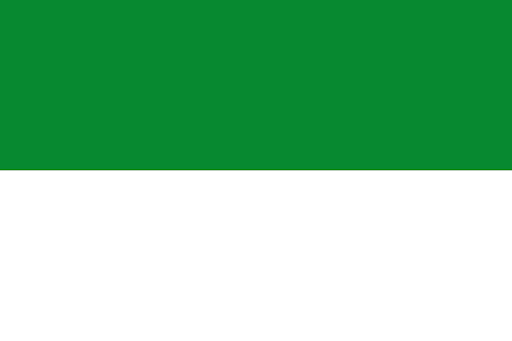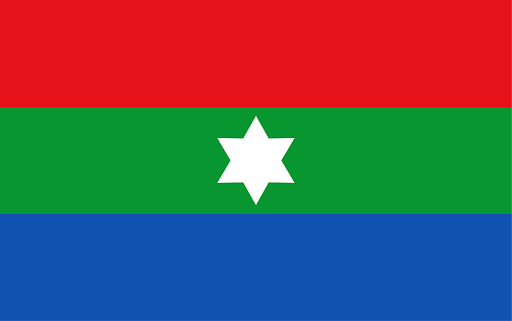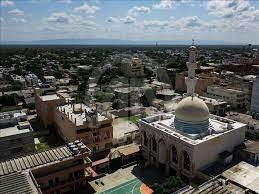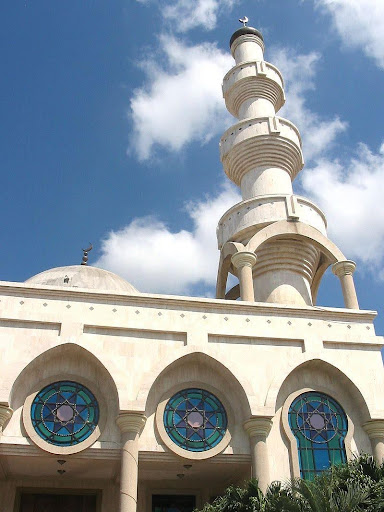Maicao
Department
La Guajira, Colombia

Flag of the city


Slogan of the city
Maicao is notable in Colombia for its sizable Arab and Muslim population. Many Arab immigrants, especially from Lebanon, settled in Maicao during the 20th century. The city is home to one of the largest mosques in Latin America, the Omar Ibn Al-Khattab Mosque, which serves as a spiritual center for the Muslim community in the region.
History
Maicao, once home to the indigenous Wayuu people, resisted Spanish conquest fiercely and maintained its rebellious stance up until the early 20th century. The city was officially founded on June 27, 1927, amidst the Wayuu territory by Colonel Rodolfo Morales and Tomás Curvelo Iguarán.
Early settlers included the families of José Domingo Boscán and Manuel Palacio López, who chose locations near the Venezuelan border, attracted by the area’s fertile land. The growth of the town’s population led to the establishment of Maicao as a township in 1929. By 1940, the population had grown to 500 residents.
The Wayuu played a significant role in running contraband trading routes from various Caribbean territories, such as Aruba, Curaçao, and Venezuela. The 1970s saw Maicao becoming a significant commercial hub, influenced by Venezuela’s oil boom and the extensive contraband activities in the Guajira peninsula. This economic surge brought Arab and other Middle Eastern immigrants, further enriching the area’s culture.
Maicao’s location near the Venezuelan border and its characteristics as a free port attracted immigrants, including a significant influx of Arabs from the Levant in the 1970s. The newcomers made notable contributions to the town’s culture and infrastructure. For example, the Colombo-Arab College Dar el Arkam was established, and the Mosque of Omar Ibn Al-Khattab, one of South America’s largest mosques, was built in 1997.
The marijuana industry in the nearby Sierra Nevada de Santa Marta mountains added a unique element to the region’s culture. The drug trade to regions with high demand, like the United States and Europe, flourished. During the 1980s and 1990s, the internal Colombian conflict started impacting Maicao, leading to an increase in extortions, kidnappings, and assassinations. The situation deteriorated further with Venezuela’s economic downturn and a clampdown on contraband by the Colombian government.
In 1991, to foster job growth, Maicao was given special customs status. This move intended to promote the import of raw materials tax-free, process them locally, and then export the finished products. Despite this initiative, the black market thrived, with undeclared goods like cigarettes flowing out of Maicao.
Issues like corruption around coal exploitation royalties, tax evasion, and tensions between locals and the government persisted. The city faced problems such as the displacement of its population due to conflict, and challenges in education and health.
Reports from the early 2000s pointed to Maicao as a potential hotspot for terrorist activity in South America, with allegations of Hezbollah cells operating in the area. These cells purportedly utilized local drug trafficking and contraband networks for money laundering, which then funded global terrorist operations. There were incidents, like the shutting down of a radio station for broadcasting Hezbollah propaganda that further fueled these claims.
In 2000, the town of Albania separated from Maicao, which resulted in Maicao losing a significant portion of its coal mine area and a consequent drop in expected royalties.

Geography
Maicao is situated at the utmost northern tip of South America, on the Guajira Peninsula, nestled within the Guajira Desert. This city is neighboured by Uribia and Manure to its north, Venezuela to its east, the municipality of Albania to its south, and the municipality of Riohacha to its west. Covering an expanse of 1,782 km², Maicao stands at an elevation of 52 meters above sea level. The city experiences a dry climate and undergoes two distinct seasons – rainy and dry. Throughout the year, Maicao maintains an average temperature of 29°C (84°F). Its geographical coordinates are 11°

Population
185,072(2020)
166,603 (2019)
One photo representative of the city
The Omar Ibn Al-Khattab Mosque, often referred to by its Spanish name “La Mezquita,” stands majestically in Maicao, La Guajira, and Colombia. Esteemed as the third-largest mosque in Latin America, it holds a unique distinction in the region: it’s the sole mosque there, making it locally renowned simply as “The Mosque.” This revered establishment, along with the Dar Alarkan School, anchors the region’s Islamic faith and culture.
Inaugurated on 17 September 1997, the mosque was christened in honour of the second caliph, Omar Ibn Al-Khattab. A collaboration of global talent, the mosque saw the designs of Iranian architect Ali Namazi come to life under the hands of civil engineer Oswaldo Vizcaino Fontalvo. The choice of pristine Italian marble for its construction adds to its grandeur. The mosque’s spacious interiors are designed to comfortably host over 1,000 individuals.
Visitors to the mosque are first greeted by a grand open hall adorned with exquisite Arabic calligraphy framed in ornate designs. Beyond this entrance hall lies a more expansive prayer hall designated for men. This space, besides being a place of prayer, also becomes a gathering ground for the community, especially during events like the breaking of fasts. Intricately engraved decorations embellish the ceiling of this hall. In alignment with Islamic traditions, there’s a designated elevated area for women to pray, which provides them a vantage point over the men’s prayer area. The minaret, an iconic aspect of mosques, towers impressively over the structure, encapsulating its architectural brilliance.
Adjacent to the mosque’s grand staircase is a solemn room, purposefully designed for the preparation of the deceased before their final journey to the nearby Muslim cemetery.

Etymology
Maicao’s name has its roots in the indigenous Wayunaiki language. The term “mai-ka-u” translates to “Land of the Maize,” highlighting the region’s agricultural heritage and the importance of maize in the community’s culture and sustenance.
What the city is known or famous for
Maicao is distinctively known for its prominent Arab and Muslim community, a unique characteristic in the Colombian landscape. The city’s cultural diversity has been significantly shaped by Arab immigrants, particularly during the thriving 1970s commercial period. Their introduction brought along a rich array of traditions, foods, and architectural wonders. A prime example is the Mosque of Omar Ibn Al-Khattab, among the grandest mosques in South America, symbolizing the deep-rooted presence of the Muslim community in Maicao. Beyond religious practices, the mosque serves as a cultural and communal hub. The contributions of the Arab and Muslim inhabitants span various sectors, including commerce, education, and societal development, positioning Maicao as a dynamic cultural crossroad.
